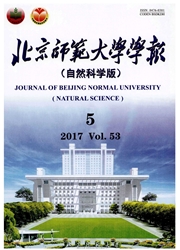

 中文摘要:
中文摘要:
城市化地区土壤碳库,既受到人类活动的强烈影响,同时又深刻地影响着城市化地区的碳循环过程.本文在采集北京市西北部典型城市化地区不同土地利用类型土壤样本的基础上,分析了不同土地利用类型下的土壤碳特征.分析结果表明:样本土壤总碳质量分数叫在0.918%~2.546%之间变动,城市林地、人工草地、山区林地样方的土壤总碳训较高,裸地最低,不同类型土壤差异并不十分显著.土壤有机碳w的变幅为0.196%~1.728%,不同类型土壤差异较为明显,最高为城市林地,其次为山区林地,最低为裸地;垂直方向上,自上而下土壤有机碳硼有明显减少的趋势,但裸地和园地的这种特征表现不明显.土壤有机碳密度的变幅为9.617-52.915(t·hm^-2),不同土地利用类型的土壤差异较明显,最高为林地,此次是园地,最低为裸地;同类型样方土壤有机碳密度,大致有城市内部高于城市边缘的趋势.土壤无机碳训的变化幅度为0.087%~1.275%,城市内部或城市用地样方,高于城市外围或农业用地样方.而土壤碳氮质量比的变幅在10.905%~98.953%之间,不同土地利用类型的土壤有着较为明显的差异,裸地表现出异常的高值,其次是人工草地,而耕地、园地、城市林地和山区林地都表现较低的碳氮比特征.总体而言,城市化地区不同类型的土壤,既表现出了自然状态土壤的一些特性,又有明显人为干扰的痕迹.
 英文摘要:
英文摘要:
Soil carbon storage in urbanization zone is strongly impacted by human activity, by influencing the process of carbon cycle. In order to analyze the effect of urbanization on soil carbon characteristics, soil samples from different land uses were collected in urban and rural areas in Beijing. Soil total carbon (STC) content, soil organic (SOC) carbon content, SOC density, inorganic carbon content and C/N of soil samples were analyzed. STC and SOC content ranged from 0. 918% to 2. 546% and from 0. 196% to 1. 728% respectively. SOC density ranged from 9. 617 to 52. 915 t.hm^-2. STC and SOC content are highest for woods in the city and least for vegetation-free land. Vertically, SOC of topsoil was larger than deeper layer soil for most samples, while it is disordered for vegetation-free land. The soil inorganic carbon content ranged from 0. 087% to 1. 275%, with higher value for city interior and lower value for suburb area. Caused by human activity, the soil C/N ranged from 10. 905% to 98. 953%, with exceptional high value for vegetation-flee land. The results show that soil in urbanization area not only has characteristics similar to natural soil, but also has distinct characteristics caused form human disturbance.
 同期刊论文项目
同期刊论文项目
 同项目期刊论文
同项目期刊论文
 期刊信息
期刊信息
